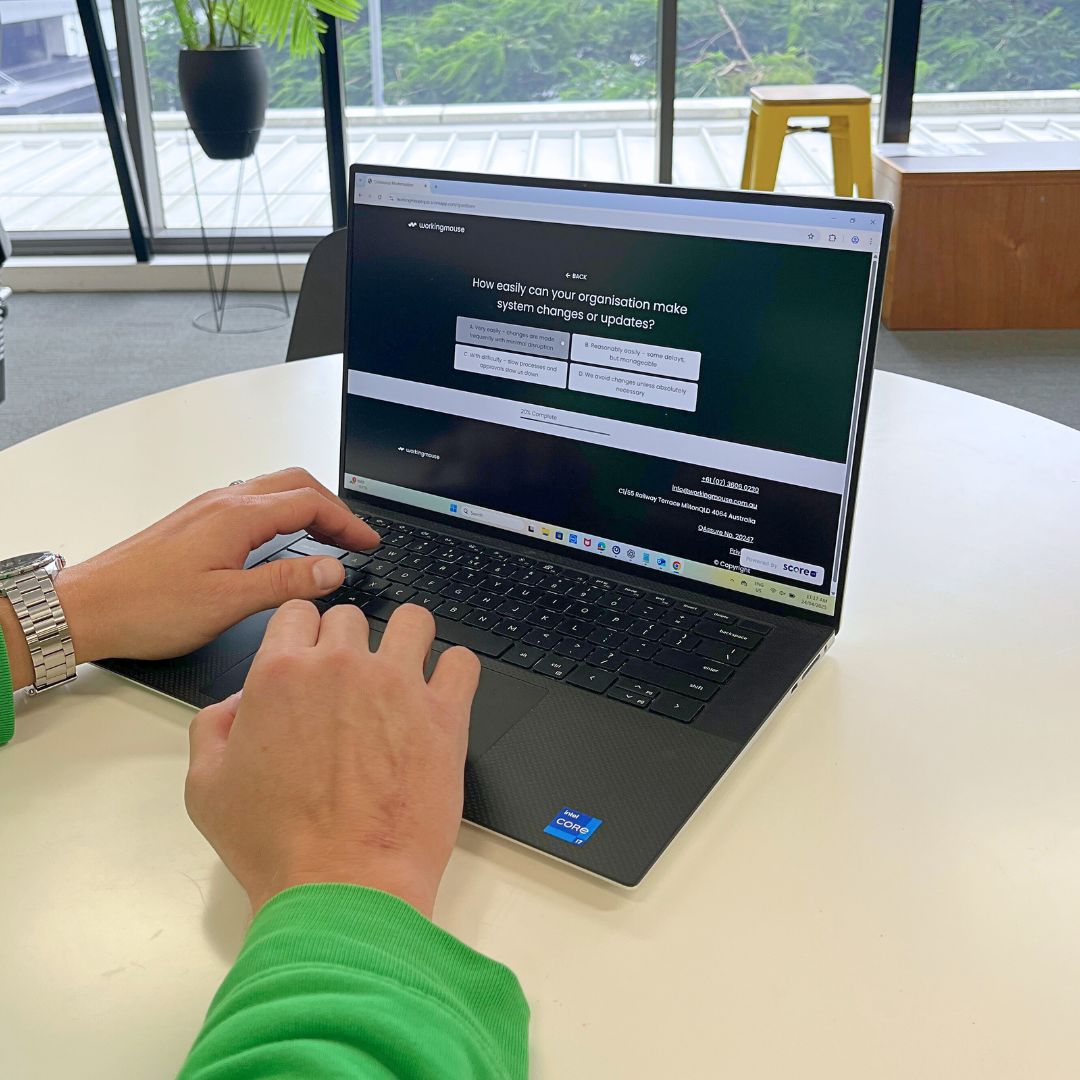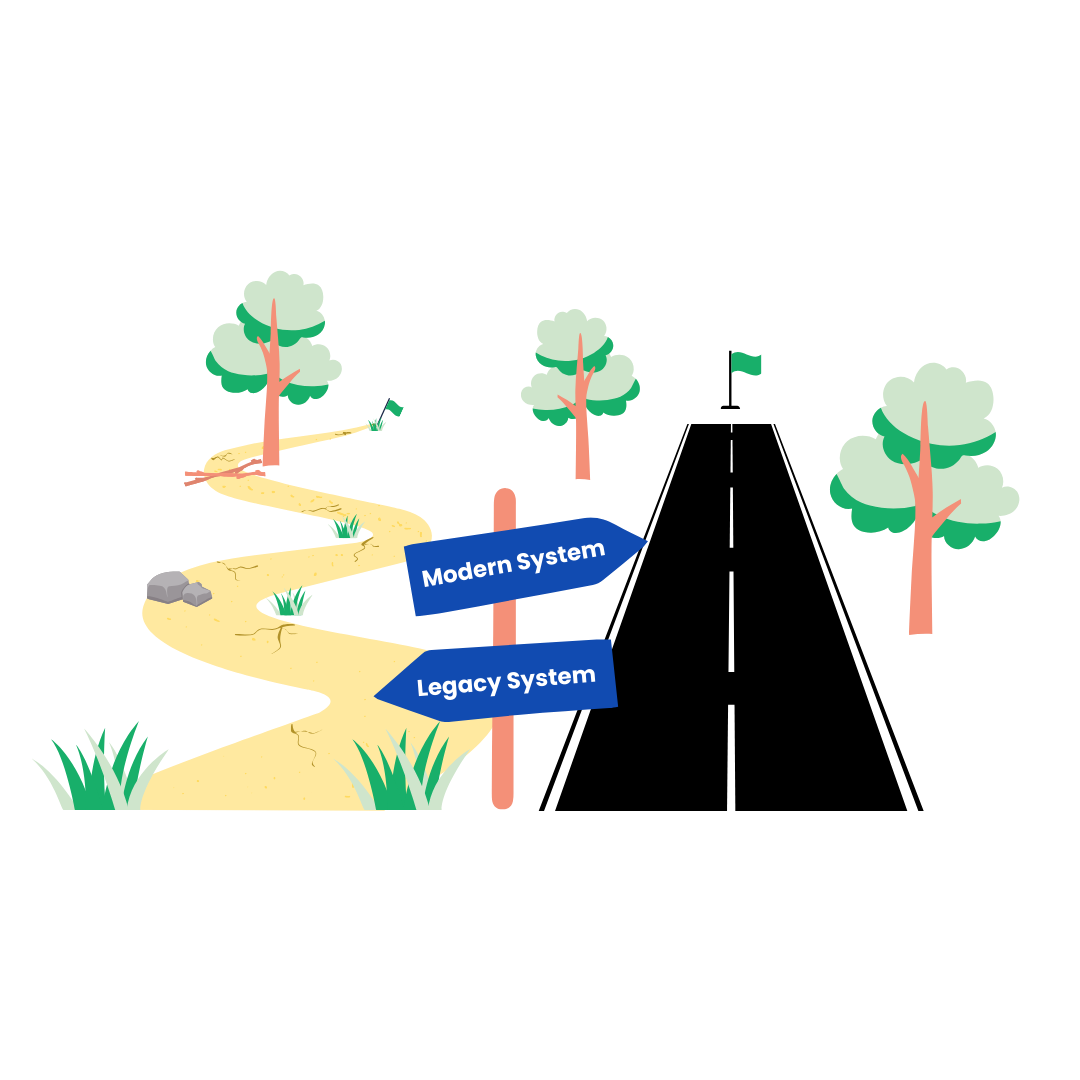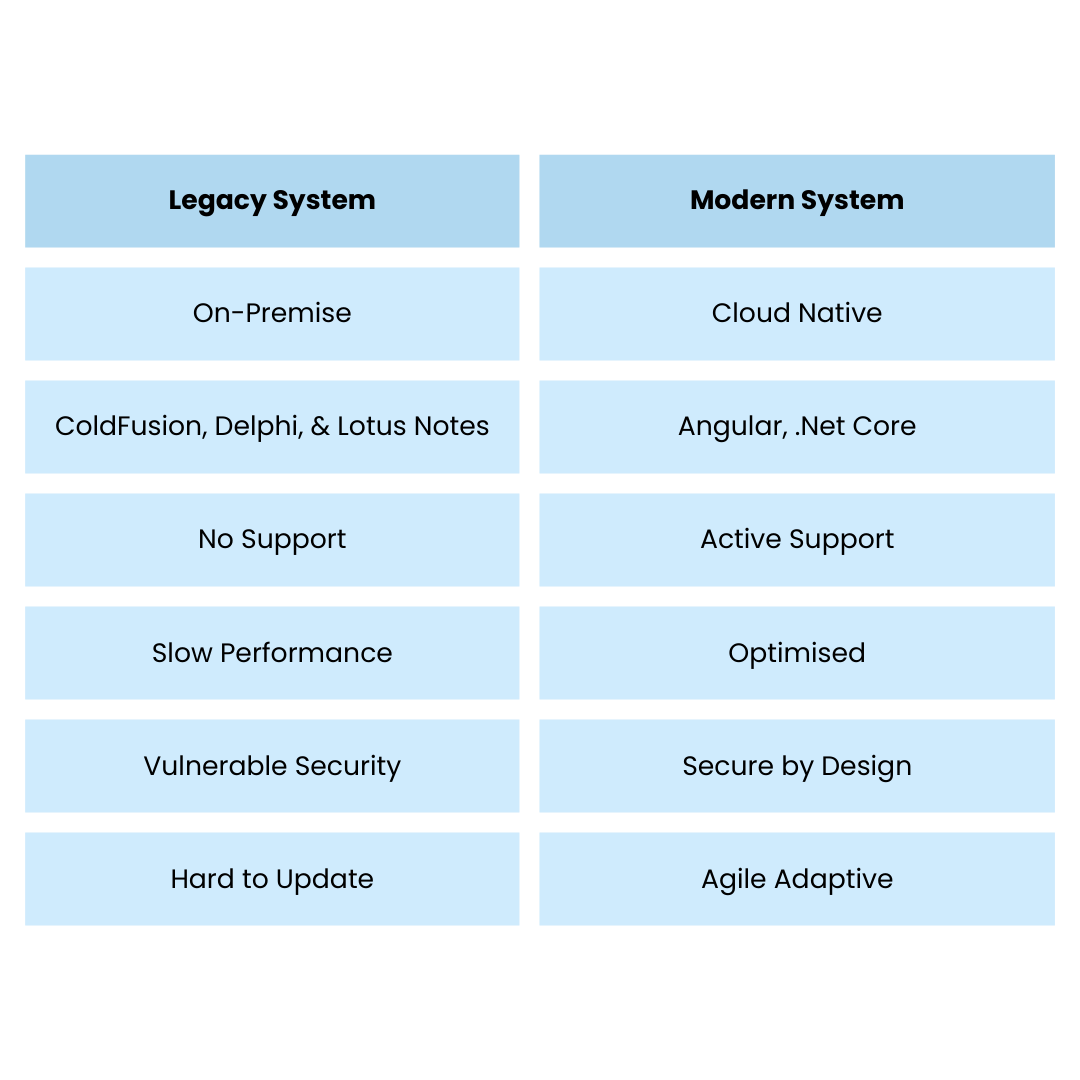
Legacy systems like ColdFusion apps, Delphi codebases, or even Lotus Notes might still be running, but for how much longer? If your organisation is facing performance issues, security gaps, or rising maintenance costs, it’s time to ask yourself:
“Is our system helping the business grow or is it holding us back?”
In this blog, we’ll go through the differences between legacy and modern systems, how to assess where your software stands, and what options you’ve got to get your organisation future ready. If you’re not sure if your system is still fit for the future, a great place to start is our quick quiz:
Take the Legacy Modernisation Scorecard Quiz
We have a few blogs covering what legacy systems are, but we’ll briefly go over it here too. A legacy system is software or infrastructure that’s outdated, technically or functionally, but still in active use. It might be built on unsupported languages, rely on on-premise infrastructure, or isn’t compatible with modern platforms like Angular, cloud-native environments, or CI/CD pipelines.

There are several reasons systems become outdated over time:
These issues accumulate, making the system more fragile and harder to maintain.

ColdFusion used to be the go-to for web app development, but it’s quickly becoming a liability. With Adobe announcing major deprecations and removals in the upcoming ColdFusion 2025 release, many businesses relying on legacy ColdFusion apps could soon face serious disruptions.
Key features that will be affected include:
These are fundamental changes that could cause critical parts of your app to stop working entirely if you upgrade and leave you vulnerable if you don’t.
On top of that, ColdFusion is no longer widely used:
Delphi was once a popular language for building Windows applications, especially in industries like manufacturing, logistics, and engineering. But, due to it becoming a legacy technology, continued reliance on Delhpi can cause issues for your organisation
While modern versions of Delphi still exist, many organisations are running older versions (Delphi 5, 7, or XE) that are no longer supported or compatible with current operating systems and frameworks. This leads to several challenges:
Even if your Delphi application is still working, it could be tied to outdated hardware, lack documentation, and might not be easily scalable or integrated with modern tools.
Lotus Notes (also known as HCL Notes) was a widely used platform for email, collaboration, and custom business applications. But now it’s considered a legacy solution. One that’s difficult to maintain and even harder to modernise without a clear strategy.
Many businesses still rely on Lotus Notes for business critical workflows built years or even decades ago. However, they now face growing issues:
While Lotus Notes still offers extended support many third-party tools and integrations have been discontinued, and even supported versions may not meet today’s security or compliance requirements. Upgrading to a newer version often comes with significant licensing costs and still doesn't solve the core problem: the architecture is outdated.
You'll know it’s time to modernise when you see these warning signs:
These aren’t just IT headaches but strategic risks!
Don’t worry, you don’t always have to do a full rebuild! We have other blogs that go in-depth on the options (check them out here), but here’s a brief overview:

Modernisation doesn’t need to be overwhelming. If you’re not sure where your system stands, our quiz can help you out.
In just 5 minutes, it helps you:
👉 Take the Legacy Modernisation Scorecard Quiz!

C1/55
Railway Terrace Milton
QLD 4064 Australia
Made with ❤️ in Milton,
Brisbane (Meanjin) Australia.
WorkingMouse acknowledges the Traditional Owners and their continuing connection to land, sea and community. We pay our respects to them, their Elders, both past and present.


© 2025 WorkingMouse Pty Ltd. All Rights Reserved.